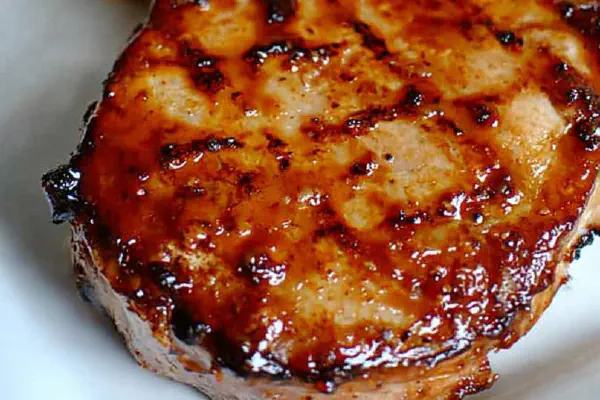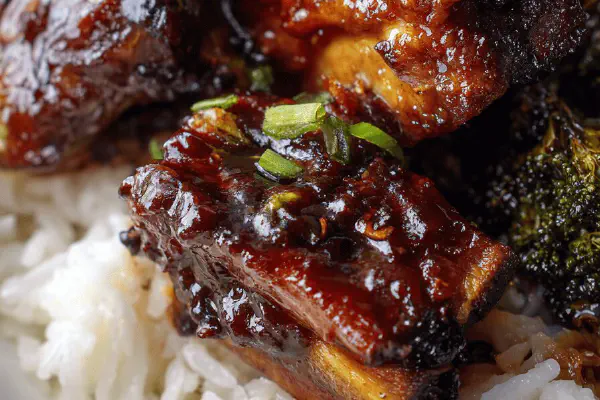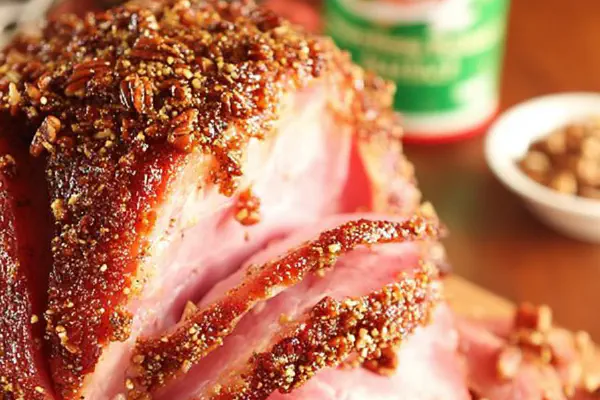Featured Recipe
Tex-Mex Pork Ribs Remixed

By Kate
"
Slow-cooked pork ribs rubbed with tangy apple cider vinegar and fresh garlic, layered with smoky cumin and smoked paprika instead of traditional tex-mex mix. Marinated for depth, baked low and slow until falling-off-the-bone tender. Glazed with spicy chipotle and orange zest honey mustard. Ideal for when you want smoky, bright, and sticky ribs with a subtle heat hit and sweet brightness. Gluten, dairy, egg, nut free. Substitutions suggested if unavailable ingredients or equipment. Measured times adjusted; visual cues prioritized for doneness.
"
Prep:
25 min
Cook:
Total:
Serves:
4 servings
pork
ribs
barbecue
Tex-Mex
slow-cooking
Introduction
Chop fresh garlic, toss with vinegar to acid-wash those ribs good early on. This isn’t your fast weeknight fix; it’s slow, all day kinda magic. Skip pre-made tex-mex powder. Pull out cumin, smoked paprika—real stuff—layer flavors. Salt scrubs deep, we want that tender yield, not dry chew. Ribs come close to room temp first—skip this and you bake chilled meat, won’t render fat right, rubbery texture waits. Coating ribs not slathering—you want all surfaces flavor kissed, no patchy spots. Foil cover keeps steam trapped early, but not sealed airtight—trap enough so ribs don’t dry but allow bark formation later. Egg wash? Save that for other cuts. When you see meat pulling sharply off bones and fork slides with slight tug, start glaze. Sticky glaze caramelizes quickly top heat, crackle under grill. Resting traps heat and juices; slice after that and you get perfect yield, no dry stringy bits. Serve warm, with acidic sides — coleslaw, pickles, or just charred lemons. Ribs whisper, not shout. Listen well.
Ingredients
About the ingredients
Measurements adjusted for balance—more vinegar for brightness, less paprika for subtlety. Smoked paprika replaces tex-mex powder, gives smoky tone without overwhelming spice blends. Honey doubled for a deeper glaze shine and sticky mouthfeel. Orange zest brightens with lift, optional cayenne adds heat without harshness—a flexible heat level you control. Garlic minced fresh—not powdered—for pungent sharpness that mellows with long marinating. Barbecue sauce swapped in place of ketchup to reduce sweetness and add smoky complexity. Mustard kept Dijon style; sharper than yellow but blends smoothly. If you miss smoked paprika, regular paprika plus a pinch of liquid smoke does well. No oven? Use covered grill, cook indirect low heat, check temperature with meat thermometer if unsure. If you can’t marinate full time, let it sit longer during final rest before searing glaze.
Method
Technique Tips
Marinate thoroughly but no longer than 36 hours or meat texture turns mushy due to acidity. Bring ribs to room temp before cooking for even heat penetration. Use wire rack so ribs aren’t sitting in fat—prevents sogginess, helps bark form. Cover loosely with foil early to trap moisture, prevent drying but avoid steaming lids that block crust formation—remove foil mid-cook. Visual cues matter: meat pulling back from bones signals near doneness, fork test for tenderness better than strict timing. Glazing at end gives sticky, tacky finish—apply thick layer, give glaze time to bubble and caramelize. Watch carefully or glaze burns easily with sugars. Rest before serving holds juices; slicing hot causes drip loss. If glaze burns, lower heat, add glaze in thinner layers. Pair with bright, acidic sides to balance fatty richness. The rule: cook low and slow, increase heat only to caramelize glaze at finish, never rush ribs.
Chef's Notes
- 💡 Use a meat thermometer; temp should hit at least 93 °C for pull-apart texture. If you lack a thermometer, meat pulling back from bones signals readiness.
- 💡 Experiment with different types of barbecue sauce—smoky, spicy, or even whiskey-infused—each brings unique notes. Customize according to taste.
- 💡 Don’t skip bringing ribs to room temp. Cold meats render fat poorly—yields rubbery results. Always rest after cooking too; seals those juices.
- 💡 If marinating too long, acidity changes texture—36 hours max is the rule. Use a shorter marination if time’s tight but still let flavors seep.
- 💡 Watch those last 40 minutes closely—sugars burn fast. Caramelization is key; if it chars quickly, pull temp back and monitor.
- 💡 faq
Kitchen Wisdom
What if my ribs are tough?
Toughness often results from overcooking; temp should stay low, moisture is crucial. Use foil to trap steam.
Can I use other cuts of pork?
Yes, country-style ribs also work. Just adjust cooking time. Bone-in is best for flavor but not mandatory.
What’s the best way to store leftovers?
Wrap in foil or airtight container. Refrigerate for up to four days. Reheat gently to avoid dry meat.
Is there a way to make these ribs spicier?
Definitely! Add more cayenne or a dash of hot sauce to marinade. Adjust based on heat preference.



